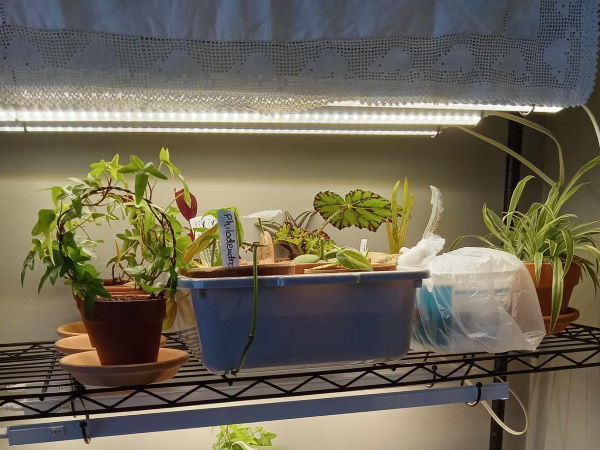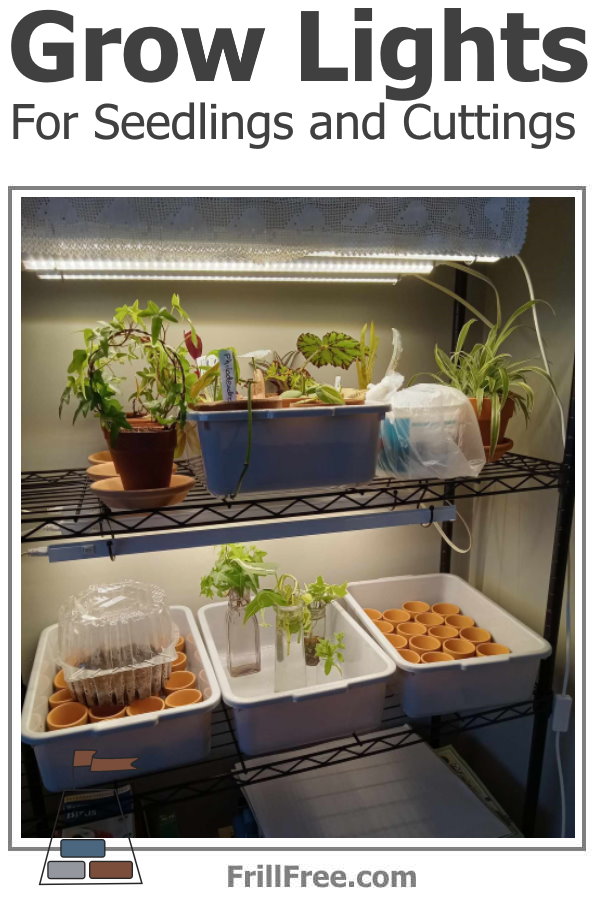- Homesteading
- Seed Planting
- Grow Lights for Seedlings and Cuttings
Grow Lights for Seedlings and Cuttings
How to Choose From So Many Options
I am a participant in the Amazon Services LLC Associates Program, an affiliate advertising program designed to provide a means for me to earn fees by linking to Amazon.com and affiliated sites. Other links on this site may lead to other affiliates that I'm associated with.
Venturing into the world of indoor gardening is a fascinating journey, particularly the propagation of seedlings and starts. One of the most critical components of indoor gardening is the use of grow lights for seeds, seedlings, and cuttings.
Why are grow lights essential for indoor growing? They are effective in simulating the full spectrum of the sun's light, a critical element in the photosynthesis process. However, knowing which type of light to use and how to install them properly could be the difference between success and failure in your indoor gardening project.
Firstly, let's talk about the types of lights that you would need for successful indoor gardening. Keep in mind the different types: Fluorescent, High Intensity Discharge (HID), and Light Emitting Diode (LED) - the ones we'll be talking about the most. Fluorescent lights are ideal for seedlings as they produce little heat and can be placed closer to the plants.
High Intensity Discharge lights are among the most efficient and powerful grow lights available. They're great if you're interested in indoor vegetable gardening in particular, as they penetrate deep into the foliage - an essential requirement for bushier plants.
LED lights are a more energy-efficient option. They can be tuned to deliver the exact color spectrum that plants need for photosynthesis. These lights can be useful if you're moving into more long-term indoor growth or looking to be more energy-conscious.
Barrina lights are one of this type. They are also super easy to add onto, up to a total of 16 lights in a sequence, just by using the additional plug ins provided.
Grow Light Installation
How do you install these lights? It's pretty simple. You hang them from the ceiling or place them on stands. For ceiling installations, adjustable chains can be handy. This lets you alter the height of the lights without a great deal of trouble.
Wire shelving units offer convenient places for "S" hooks. If you buy LED lights that are in the form of a long strip, they can be adjusted by the means of several hooks in sequence, to lower or raise the lights.
One of the most common questions is, "how close should these grow lights be to the plants?" The answer lies in the type of light and the stage of the plant's growth.
Fluorescent lights, because they emit little heat, can be placed as close as two to four inches above the seedlings. This proximity allows the seedlings to absorb as much light as possible without getting overheated.
On the other hand, HID lights generate a significant amount of heat. Therefore, depending on the exact bulbs and the trough (reflective hood), you should place them 24 to 36 inches (60 to 90cm) away from your plants.
LED lights are variable. The manufacturer's instructions should be
your guide. But typically, they should be 12-24 inches (35 to 60cm) from
the top of the plants. They do produce some heat, but usually not
enough to create an overheating issue for seedlings so they can be even
closer, down to around 8"
Remember, the goal is to imitate the natural sunlight as closely as possible. This means adjusting the height as your plants grow. Dropping the lights too low can lead to scorched leaves while placing them too high could lead to weak, stretched-out plants.
Let your plants guide you - lower the lights if the plants look like they're reaching for more, raise them if they are getting heat damage or are touching the lights.
If the light seems to intense at any stage, turn off one of the light bars, they all have an off switch which won't affect the others in the sequence - such a handy feature. So even if you start with four bars, three might be enough for light sensitive plants.
Now, let's talk about timing. Proper lighting goes beyond the right grow lights and their ideal placement—it's also about timing. You'll want to ensure that your plants get the right amount of "daylight" hours according to their natural environment.
Typically, seedlings require 14-16 hours of light per day. An automatic timer can help if it's difficult to maintain this schedule manually. Following this, seedlings should have a period of total darkness, essential for their growth and development.
 Seedlings and cuttings under lights
Seedlings and cuttings under lightsSuccess growing transplants indoors can become a way of arresting
the effects of climate change. The specific grow light availability has
expanded with the growing popularity of indoor gardening. The demand has
exploded recently as more people grow their own food, using grow lights
to extend the season.
Take advantage of this expansion and consider your indoor garden's long-term function when selecting your grow lights. Are you growing plants under lights full time, or are you starting seeds to transplant outdoors?
For those growing full-time under lights, a combination of HID or LED, depending on your budget and space considerations, will usually be the best choice. For those starting seeds to eventually transfer outdoors, fluorescent lights are often enough.
In the end, you might even want to consider a grow light setup that allows for versatility. Multiple, differently spec'd lights can be handy for different stages of growth and varying types of plants.
You're probably wondering about the power consumption of grow lights. It's a valid concern, given that these lights are on for long hours. Fluorescent and LED lights are more energy-efficient and cost-effective when compared to HID lights.
As indoor gardening becomes more prevalent, the technology used for grow lights is improving. LED lights, for instance, are becoming more powerful and efficient, providing growers with better results and value for money.
Now, you're armed with the key knowledge on grow lights for seeds, seedlings, and cuttings. This includes what type of lights you might need, their installation process, and how close they should be to your plants.
So, what's stopping you? Gather your seeds and get growing. But remember, while grow lights are important, your plants will still need your love and care to thrive.
As the climate changes, indoor gardening is not just a hobby but may well be the secret to food security and sustainability.
Your indoor garden can extend the season, offering an eco-friendly alternative and driving self-sustainability in the face of relentless climate change. So why not embrace the innovation of indoor gardening, and in doing so, take control of the environment that your plants grow in, one light at a time.















